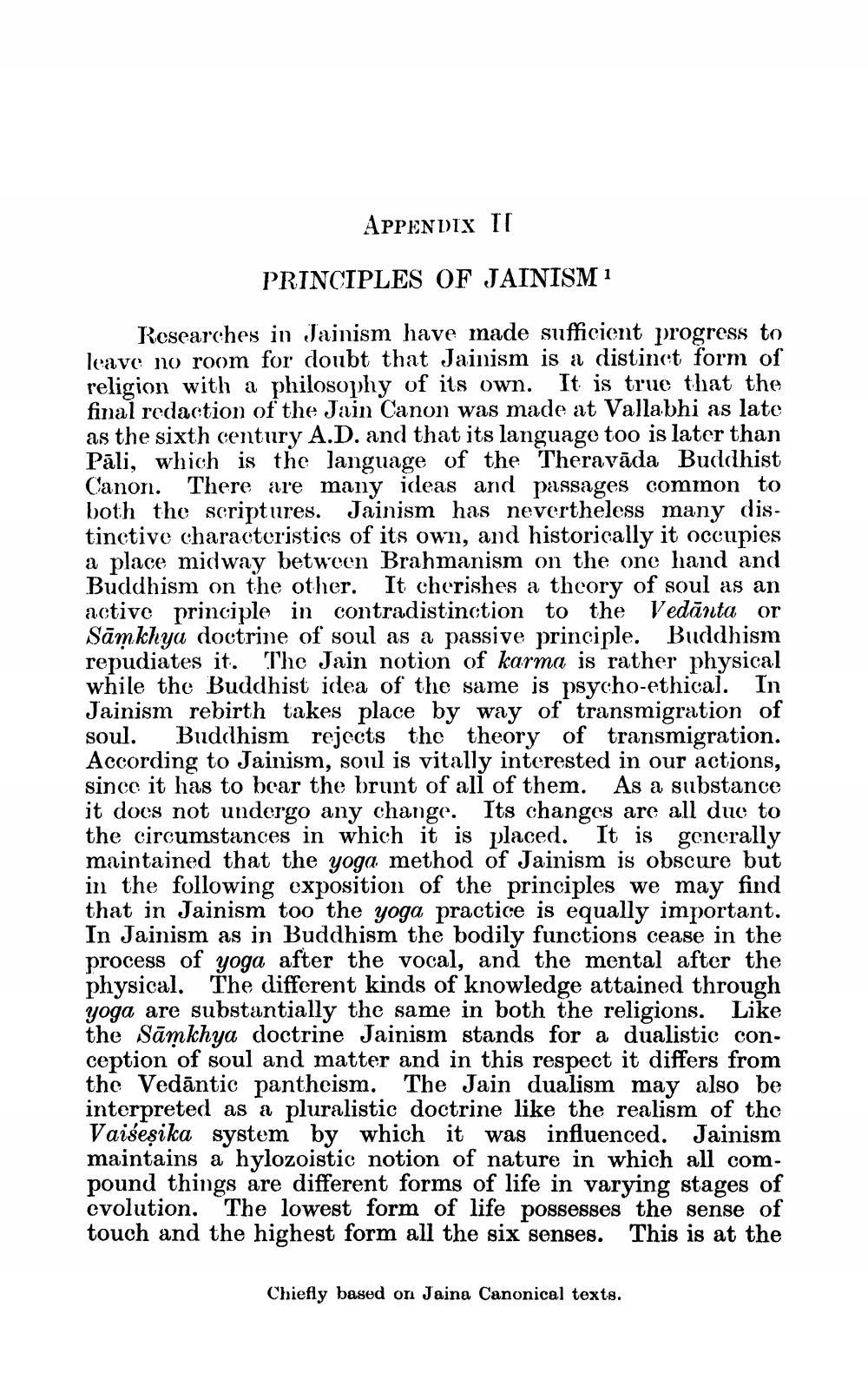________________
APPENDIX II
PRINCIPLES OF JAINISM1
Researches in Jainism have made sufficient progress to leave no room for doubt that Jainism is a distinct form of religion with a philosophy of its own. It is true that the final redaction of the Jain Canon was made at Vallabhi as late as the sixth century A.D. and that its language too is later than Pali, which is the language of the Theravada Buddhist Canon. There are many ideas and passages common to both the scriptures. Jainism has nevertheless many distinctive characteristics of its own, and historically it occupies a place midway between Brahmanism on the one hand and Buddhism on the other. It cherishes a theory of soul as an active principle in contradistinction to the Vedanta or Samkhya doctrine of soul as a passive principle. Buddhism repudiates it. The Jain notion of karma is rather physical while the Buddhist idea of the same is psycho-ethical. In Jainism rebirth takes place by way of transmigration of soul. Buddhism rejects the theory of transmigration. According to Jainism, soul is vitally interested in our actions, since it has to bear the brunt of all of them. As a substance it does not undergo any change. Its changes are all due to the circumstances in which it is placed. It is generally maintained that the yoga method of Jainism is obscure but in the following exposition of the principles we may find that in Jainism too the yoga practice is equally important. In Jainism as in Buddhism the bodily functions cease in the process of yoga after the vocal, and the mental after the physical. The different kinds of knowledge attained through yoga are substantially the same in both the religions. Like the Samkhya doctrine Jainism stands for a dualistic conception of soul and matter and in this respect it differs from the Vedantic pantheism. The Jain dualism may also be interpreted as a pluralistic doctrine like the realism of the Vaisesika system by which it was influenced. Jainism maintains a hylozoistic notion of nature in which all compound things are different forms of life in varying stages of evolution. The lowest form of life possesses the sense of touch and the highest form all the six senses. This is at the
Chiefly based on Jaina Canonical texts.




